Inventory-Constrained Design
Limb: Inventory-constrained design method for application of natural tree crotches as heavy timber joinery
Omid Oliyan Torghabehi, Peter von Buelow, Steven Mankouche, Kasey Vliet
University of Michigan Ann Arbor, Michigan
LIMB is a project recently started at Taubman College at the University of Michigan to explore the potential use of natural tree bifurcations as a new joinery method in heavy timber construction.
This research studied the natural occurrence of branch bifurcations in different wood species to develop practical concepts for design and fabrication of timber joinery in a single bifurcated wood form which would replace traditional mortise and tenon or steel connections.
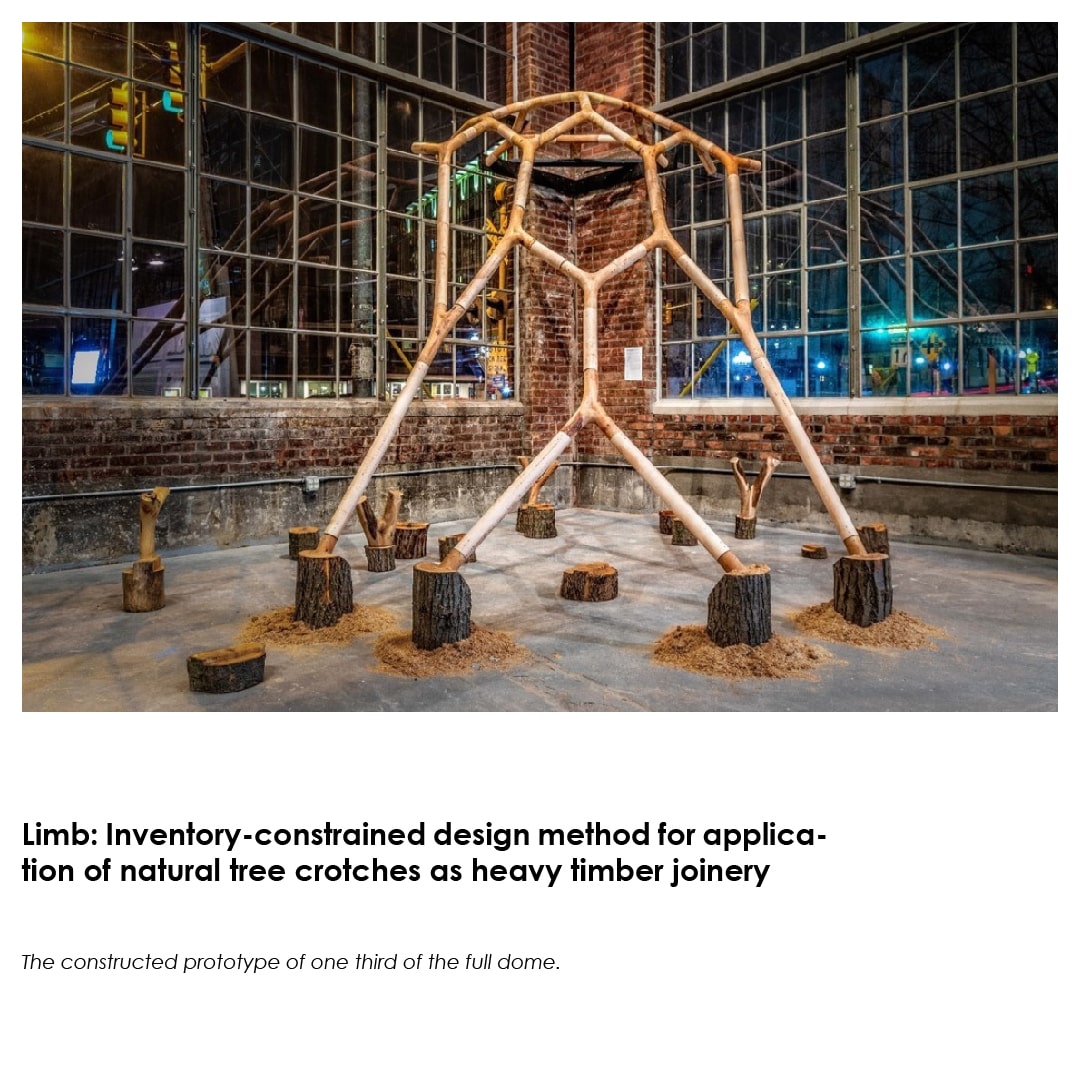 Through the design and fabrication of a full-scale reticulated dome, this research showed how organic variations in tree limb bifurcation brings about valuable and sustainable opportunities for generative architectural design of heavy timber construction.
Through the design and fabrication of a full-scale reticulated dome, this research showed how organic variations in tree limb bifurcation brings about valuable and sustainable opportunities for generative architectural design of heavy timber construction.
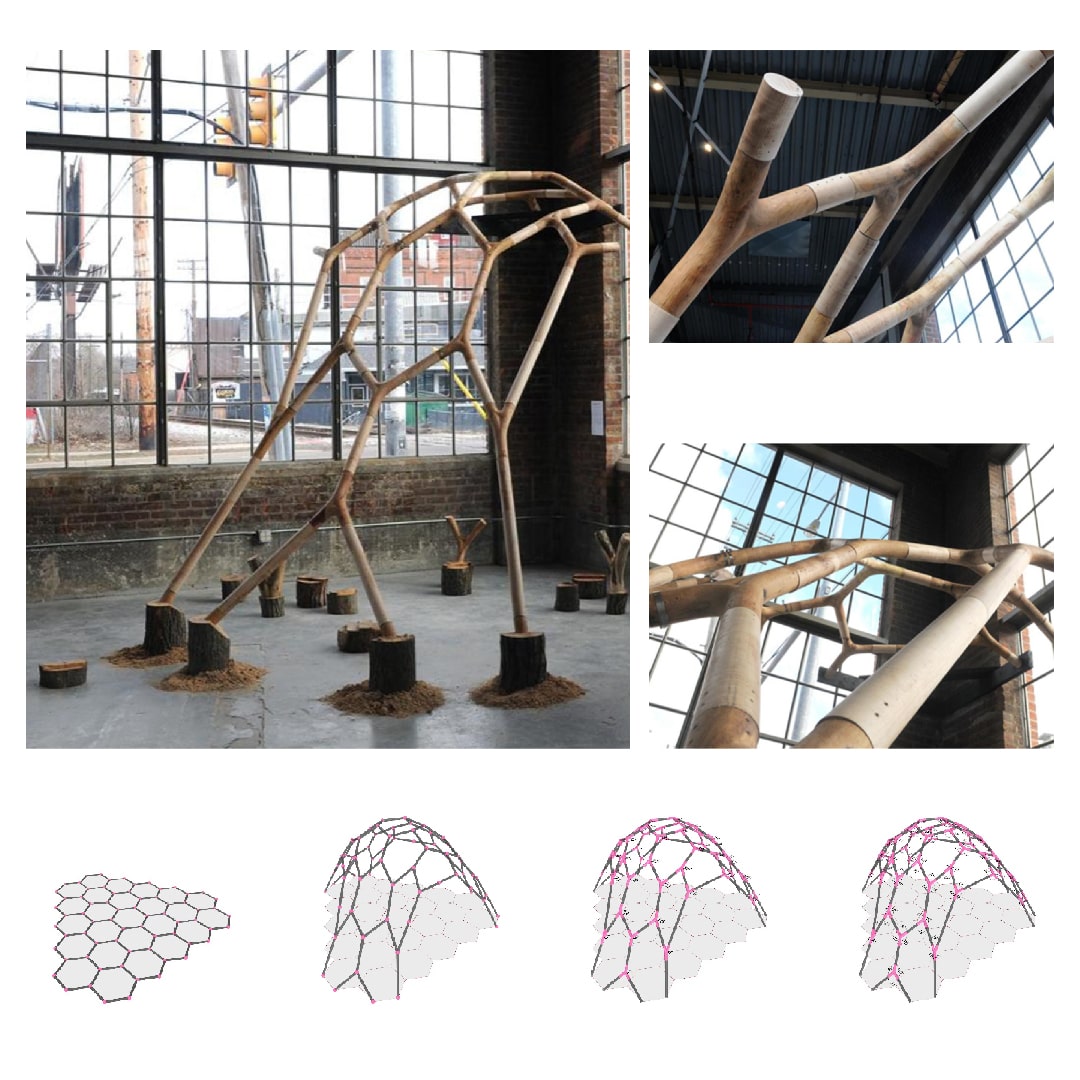 Towards this goal, a hybrid physical/computational workflow was developed to study the application of these organic elements through the integration of computational design modelling and 5 axis digital fabrication.
Towards this goal, a hybrid physical/computational workflow was developed to study the application of these organic elements through the integration of computational design modelling and 5 axis digital fabrication.
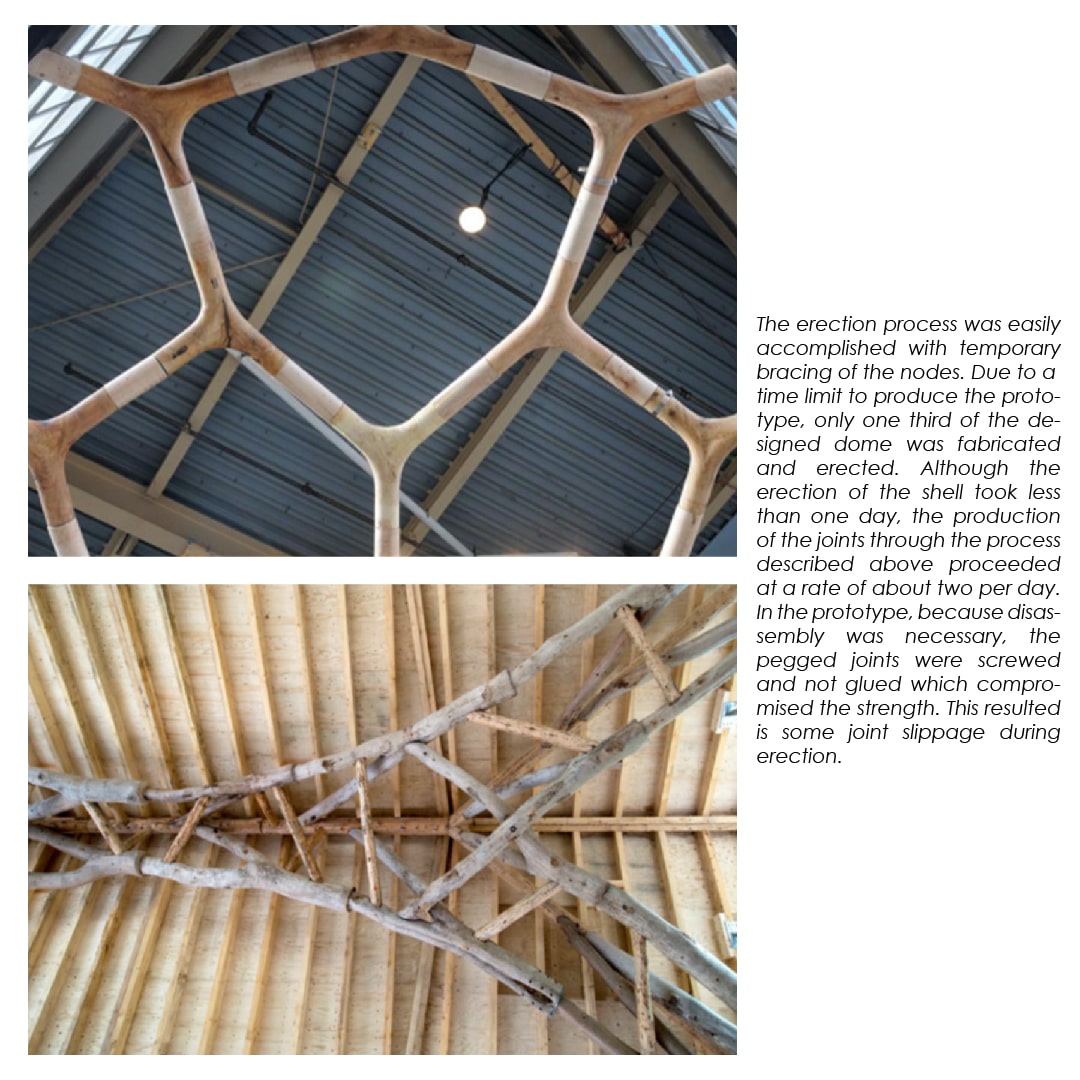 The computational workflow used the inventory of harvested tree crotches to inform the geometry of the dome to reduce material use and routing time, and moreover, the workflow evaluated the structural performance of the dome geometry using finite element analysis under self-weight and environmental loads, and provided performance and fabrication feedbacks which informed the design process.
The computational workflow used the inventory of harvested tree crotches to inform the geometry of the dome to reduce material use and routing time, and moreover, the workflow evaluated the structural performance of the dome geometry using finite element analysis under self-weight and environmental loads, and provided performance and fabrication feedbacks which informed the design process.
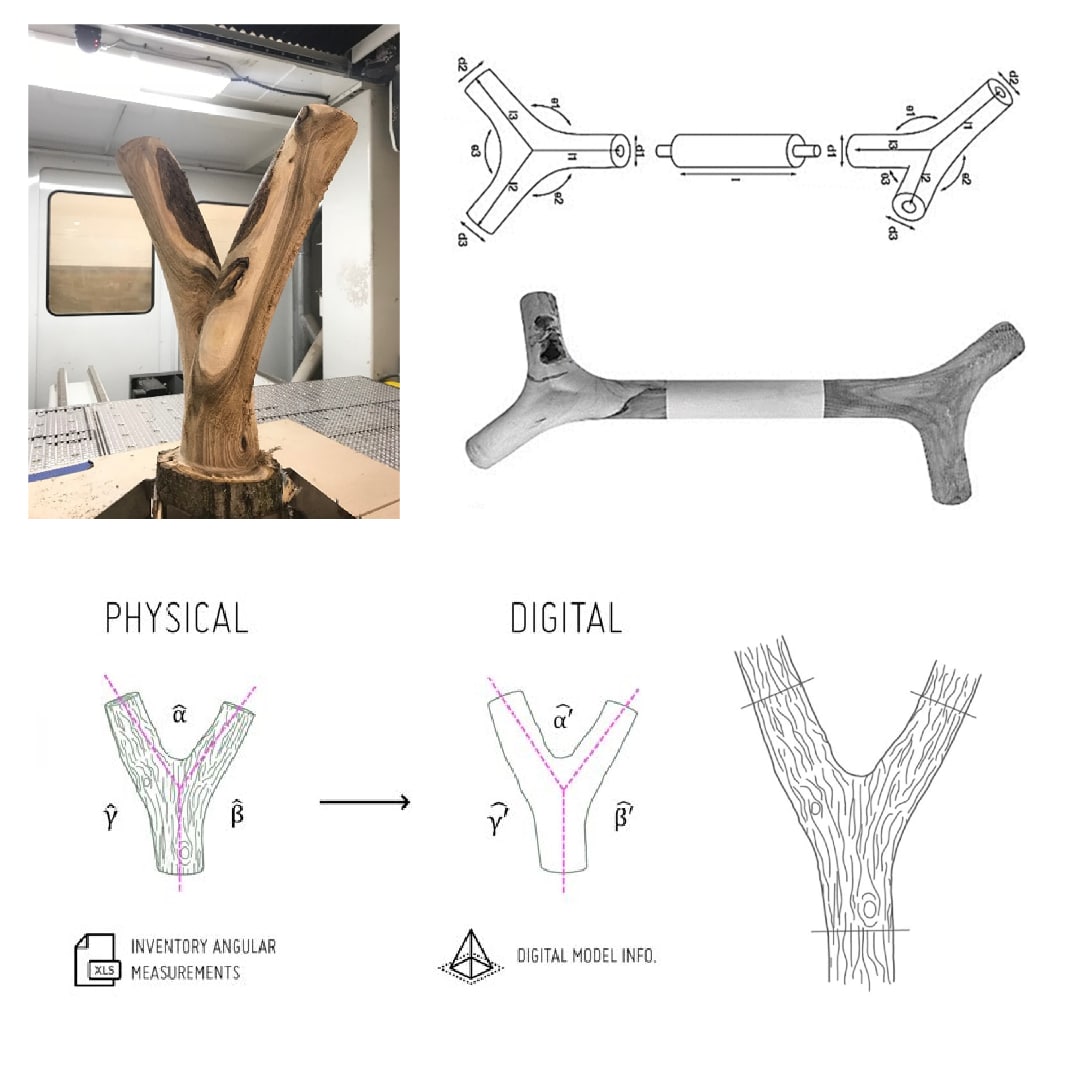 This computational workflow was then integrated in a genetic-based form exploration process where variations in design parameters were studied through visual and quantified fabrication and structural feedback and the final geometry was chosen based on visual aesthetics and fabrication constraints.
This computational workflow was then integrated in a genetic-based form exploration process where variations in design parameters were studied through visual and quantified fabrication and structural feedback and the final geometry was chosen based on visual aesthetics and fabrication constraints.
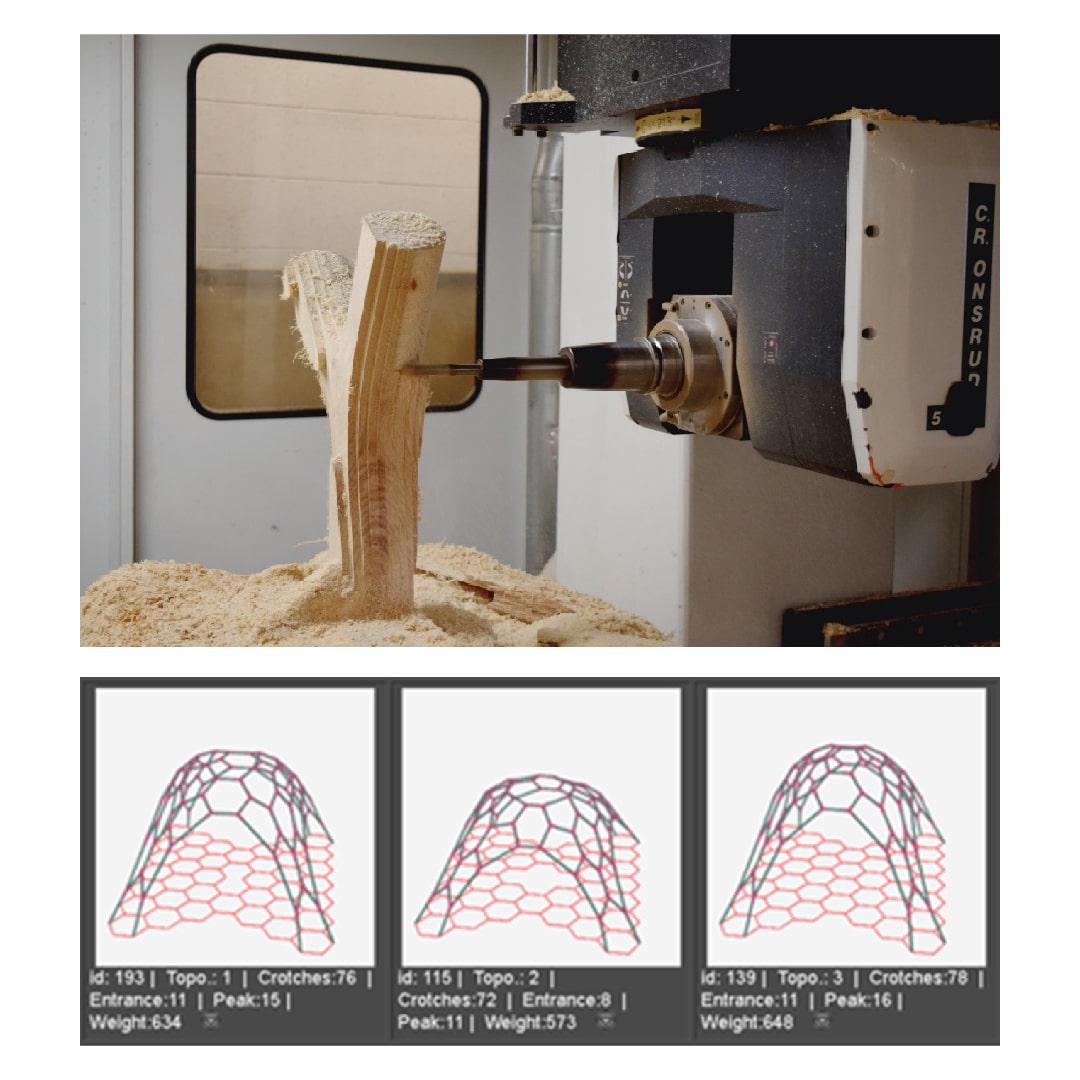 This fabrication and inventory-aware process was a proof of concept for practical application of tree branch bifurcation for full scale construction.
This fabrication and inventory-aware process was a proof of concept for practical application of tree branch bifurcation for full scale construction.
Beyond the reduction of waste and added value, this research explored opportunities for more organic and sustainable design and construction of heavy timber joinery in the industry.
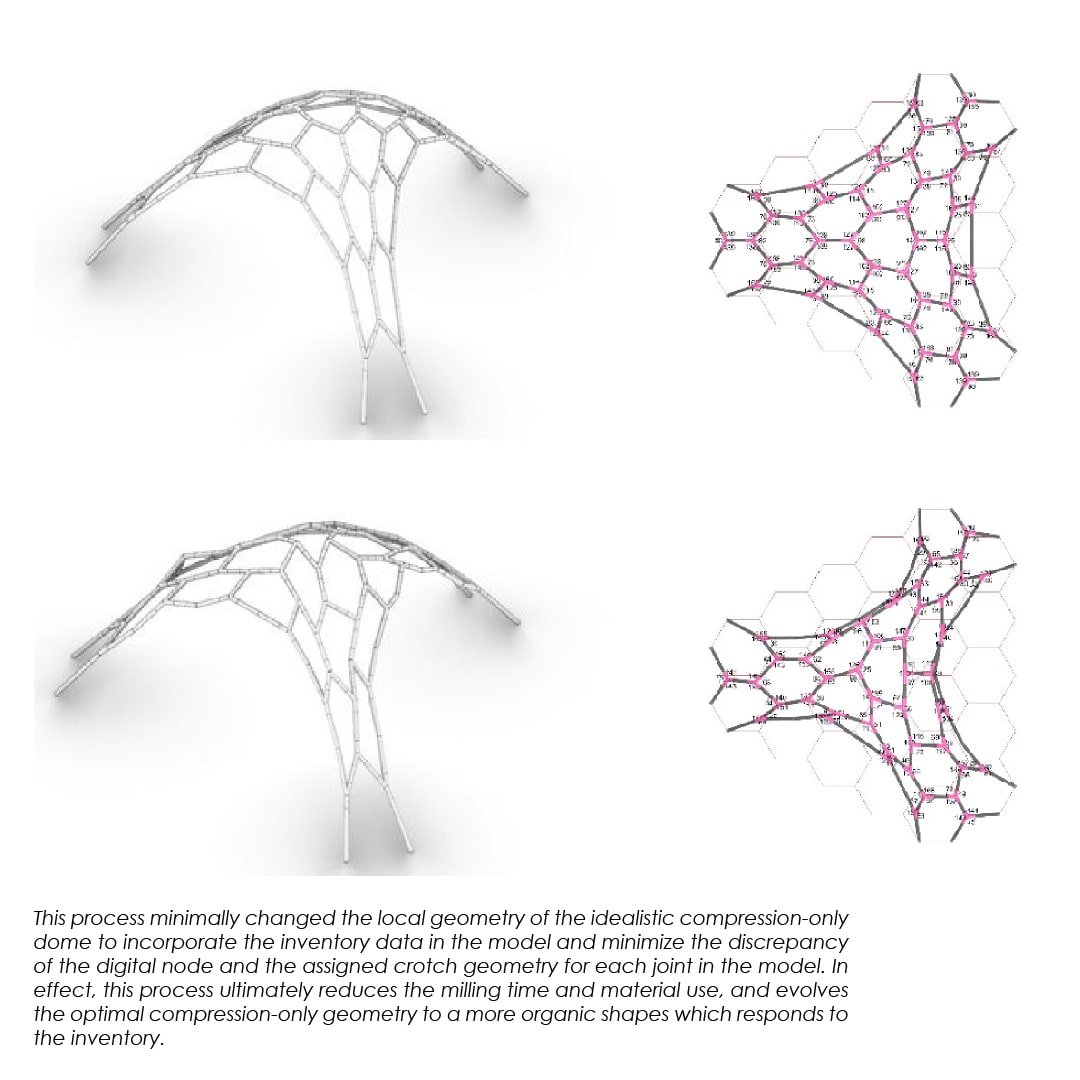 Historic precedents for the use of tree crotches in wood structures can be found in both 17th century framing for naval vessels, as well as joinery in timber barn construction.
Historic precedents for the use of tree crotches in wood structures can be found in both 17th century framing for naval vessels, as well as joinery in timber barn construction.
Presumably, this technique offered angular joints without complex mortise and tenon details. Additionally, this could achieve a degree of moment resistance that exceeded other joining techniques.
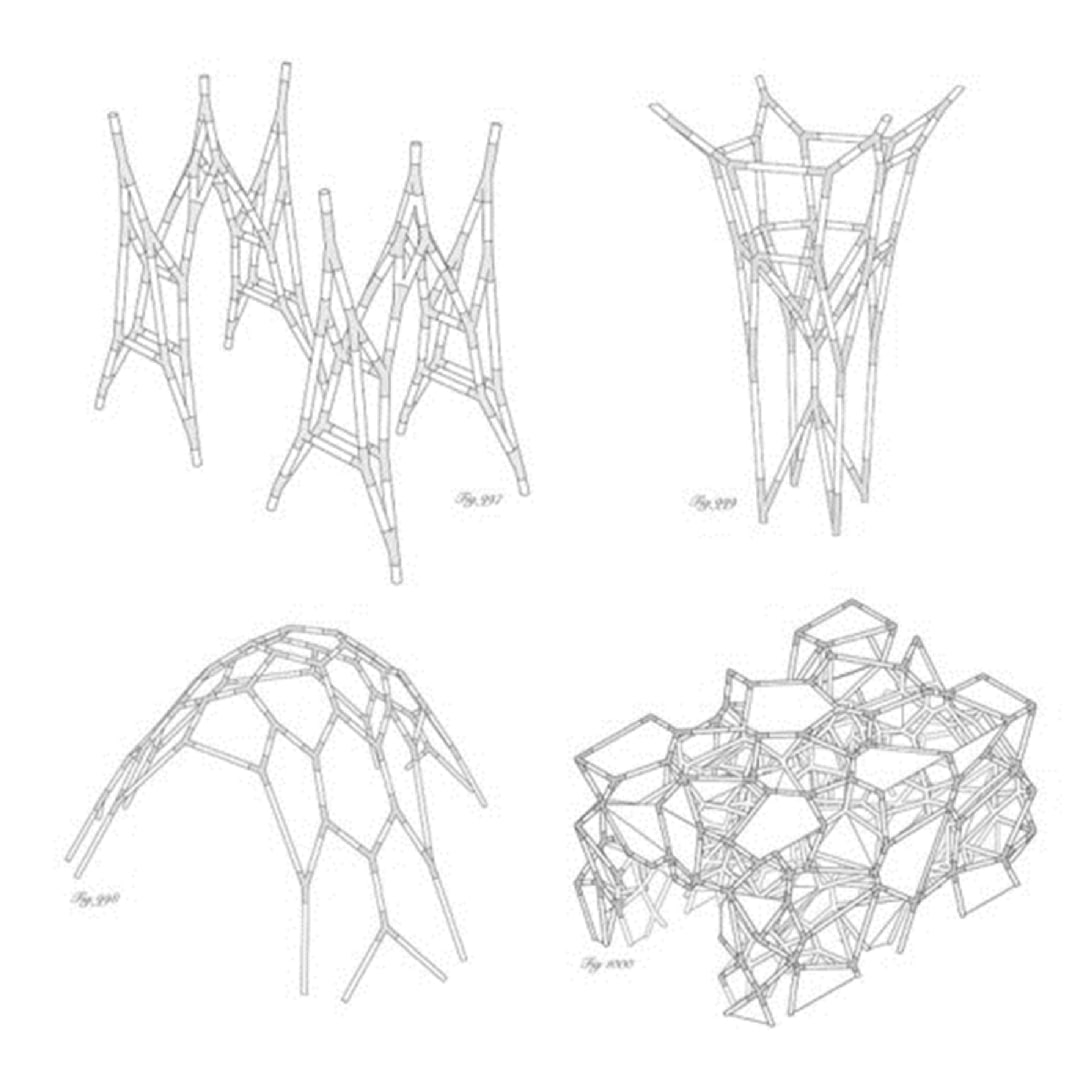 More recently, Claus Mattheck at the University of Karlsruhe carried out extensive physical testing of the behavior and strength of natural forked tree sections.
More recently, Claus Mattheck at the University of Karlsruhe carried out extensive physical testing of the behavior and strength of natural forked tree sections.
In his work he also provided guidelines for the selection and defect detection in these pieces in nature. More extensive research was carried out on structural and fracture capacity of tree bifurcations in hazel (Corylus avellane) by Seray Özden1et al.
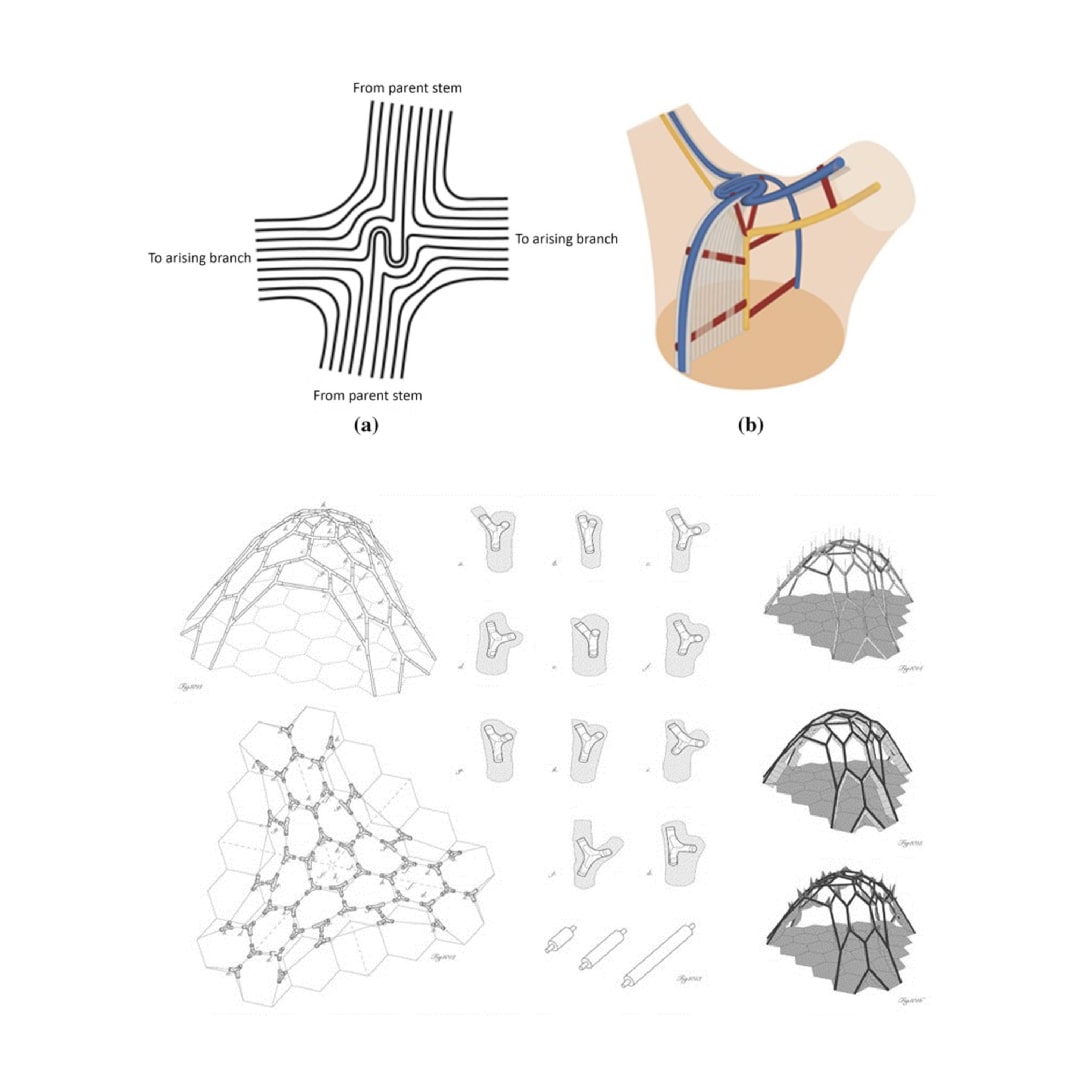 This research studied the toughening mechanism of the tree forks through destructive fracture test to study the fracture capacity of the interlocking wood grain that produces the critical join between branches at the apex of a hazel fork.
This research studied the toughening mechanism of the tree forks through destructive fracture test to study the fracture capacity of the interlocking wood grain that produces the critical join between branches at the apex of a hazel fork.




























Comments